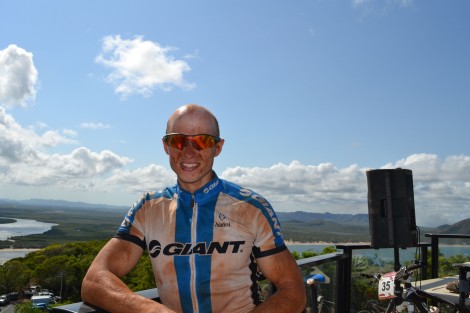The 2012 Crocodile Trophy attracted a broad range of enthusiastic bike riders. Some were professional road racers, some were professional mountain bikers. Luke Haines was one of many Australians who entered the Croc, and his background is as a full time Adventure Racer, based in Geelong, Victoria. It’s the same event, but a very different experience for all who undertake the Crocodile Trophy. While similarities can be drawn between the Croc and other races – it’s not like other bike races out there.
“I’ve done about five expedition length races, which are anywhere between four and six days long non-stop. You just sleep whenever you like. I’ve done stage racing as well which is a lot faster, as you get to sleep more.” Haines also lists multi sport races from 3 hours length upwards, and plenty of well known mountain bike races, like the Kona Odyssey.
Adventure Racing can take you to some very remote locations, especially for the expedition length events. This is quite different to most pure mountain bike races, where we have marked courses, feed stations, and typically expect to be done well before night fall. We don’t expect to be completely on our own in the wilderness – we just expect to get that feeling of isolation now and then. Haines explains that the expedition length races are quite different to what he has experienced in mountain bike races. “You’re really on your own too, with a map and compass you have to find your own way some of the time. Find your own water, take your own food for 24 hours. It’s pretty full on sometimes.”
While Haines was fine to adapt to the racing, and ride into the event, he noticed a few big differences between what he experiences in an adventure race, and what he found at the Croc. One of these big things was the issue of responsibility and competitor safety. Haines pointed out how expedition racing in particular differed to the Croc.
“You carry a big first aid kit yourself. So you have to be able to deal with emergencies as a team well before anyone else can get there. You’re in such remote places a lot of the time a helicopter is the only way to get in. Nowadays, we all have GPS trackers, so that’s an added safety element. You can press a button, and people know where you are. Help could still be a couple of hours away.” Despite all that though, Haines stresses “You still need to be able to look after yourself.”
“Adventure Racing seems to need to deal with safety a lot more than this race. We were hours from help in the Crocodile Trophy, and there was no compulsory first aid kit, no talk of what could be dangerous out on the course. There was no hint of a GPS tracker for riders, or communication between the race organisers and depots via radios. These standard things in Adventure Racing was lacking here.”
And a lot of those things are standard in many mountain bike races. All Rapid Ascent races require a compulsory first aid kit. Big mountain bike events have Marshall’s that are on contact with the Race Director. However the cost of satellite phones, minimal mobile network, and unreliable radio communication create a big problem with in race communication within the race organisation during Croc Trophy stages. If you get hurt, you may be alone for quite some time – depending where you are in the field. With a doctors car upfront, and one almost driving sweep, the time gap between medical assistance can be dramatic.
“I think if you understand that that’s what the race is about, you enter at your own risk. It’s quite achievable to do. If you’re going to bomb a downhill, and take a few risks, you have to understand there is a long wait for help to come if you stuff up. You need to be responsible for yourself.” Clearly this mindset assisted Haines in improving every day, and suffering few problems while racing. He rode conservative race as required, and raced aggressively when it was important.
Haines improved everyday – by racing sensibly and being aware of risks in the Outback. Photo: Regina Stanger
“Improving every day was a huge high for me. I started off really slowly and didn’t feel like racing. With 2000m of climbing each day over the first few stages it really took a toll on my legs. But I got better each day, and the last day was the best for me.” Haines was 3rd overall and the fastest Australian on Stage 9.
Haines summed up one of the key differences of the Crocodile Trophy over many other races. It’s isolated, and the race organisation is there to facilitate the event, but is not always the complete and comprehensive support network we expect in many mountain bike events. Not all hazards are marked. We don’t have the dirt roads and trails to ourselves – and making mistakes can be costly. This shouldn’t dissuade you from competing in the Crocodile Trophy – but it certainly can shape your experience, and make completing it more rewarding when you know of, and can manage, the risks.

